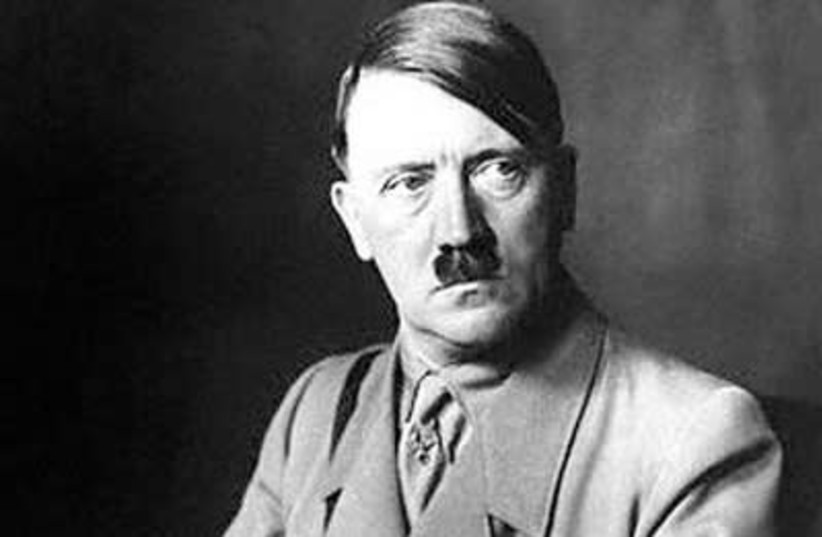This week marks the 725th anniversary of the Rindfleisch massacres, one of the gravest and most extensive anti-Jewish pogroms in the history of medieval Europe.
Despite the rivers of blood that were shed and the devastation that was wrought on German and Austrian Jewry, it inexplicably remains one of the least-remembered episodes in the annals of our people and their painful sojourn on the continent.
Indeed, the Rindfleisch massacres were among the first recorded attempts at wholesale genocide directed against the Jews in Germany and Austria, setting a horrifying historical precedent that would later be outdone with relish by Adolf Hitler and his regime. For that reason alone, it is worth recalling this dark chapter.
How did the genocide attempt against the Jews begin?
The torment began on April 20, 1298, after the Jews of the German city of Rottingen were accused of “desecrating the host,” a popular medieval slander according to which Jews stabbed and defiled the wafer used by Catholics in their Sunday services.
As the accusation spread, a knight named Rindfleisch whipped up Rottingen’s locals into a frenzy and vowed to wipe out “the accursed race of the Jews,” claiming he had a mandate from heaven. Together with a mob, he proceeded to attack the city’s Jews, viciously slaughtering them and burning many at the stake.

The marauding thugs then went from town to town, and in subsequent months they attacked a total of 146 Jewish communities, many of which were completely destroyed. With rare exceptions, local authorities and church officials did nothing to stop the slaughter.
Historians differ as to the number of Jews who were killed, with estimates ranging from 20,000 to as many as 100,000 men, women and children.
The Rindfleisch massacres were the first major coordinated assault on Jews since the First Crusade.
One can only imagine the terror that must have gripped German and Austrian Jewry as the murderers left a path of destruction throughout the region.
Among the Jewish victims was one of the leading rabbis of the day, Rabbi Mordechai ben Hillel. He was murdered in Nuremberg at the age of 48 together with his wife and five children on August 1, 1298, the 22nd of the Hebrew month of Av. They were among 628 Jews in the city who perished that day after refusing to abandon their faith. Nuremberg’s Jews had sought refuge in a fortress from the ruthless rabble and attempted to defend themselves, but in the end they were mercilessly butchered.
Rabbi Mordechai was a student of Rabbi Meir of Rothenburg, who was a towering giant of his generation and one of the Tosafists.
He was related to Rabbi Asher ben Yehiel, known as the Rosh, and he authored an important work on Jewish law which has come to be known as “the Mordechai.” It is quoted throughout the Shulhan Aruch, the authoritative Code of Jewish Law.
Many of the sources from earlier generations that the Mordechai cites have been lost to history, making his work the only source for some of the earliest Ashkenazi rabbinical rulings. He also wrote a number of slihot, or penitential prayers and poems. His death at such a young age robbed the world of a great sage and prolific scholar.
What can we learn from the Rindfleisch massacres?
IN RETROSPECT, despite the passage of so many centuries, the Rindfleisch massacres have much to teach us.
The slaughter is a potent reminder that German antisemitism did not begin in the 1930s or emerge from nowhere. It had a long and disgraceful record of mayhem and bloodshed which stretched back for hundreds of years, one that laid a fertile foundation for later generations.
And the massacres also reveal a terrifying truth about the danger of widespread antisemitism, one that remains no less relevant in the modern era.
All it took to set off the powder keg of hate that erupted into a frenzy of mass murder of Jews was a single, localized spark. That was enough to kindle a wave of bloodshed that would engulf countless thousands of Jews.
In his classic 1943 work The Devil and the Jews: The Medieval Conception of the Jew and Its Relation to Modern Anti-Semitism, Joshua Trachtenberg noted the importance of heeding the past, if only because it has shaped the present and can offer us invaluable insight.
“If the Jew is today despised and feared and hated,” he wrote, “it is because we are the heirs of the Middle Ages. If it is possible for demagogues to sow the seeds of disunion and discord, to stir fanatical emotions and set neighbor against neighbor, it is because the figure of the ‘demonic’ Jew, less than human, indeed, antihuman, the creation of the medieval mind, still dominates the folk imagination.”
“If the Jew is today despised and feared and hated, it is because we are the heirs of the Middle Ages. If it is possible for demagogues to sow the seeds of disunion and discord, to stir fanatical emotions and set neighbor against neighbor, it is because the figure of the ‘demonic’ Jew, less than human, indeed, antihuman, the creation of the medieval mind, still dominates the folk imagination.”
Joshua Trachtenberg
As much as we might want to believe that the advance of modernity has swept away past hatreds, the rise in antisemitism around the globe clearly indicates otherwise.
And the Rindfleisch massacres, which came at a time of political divide and unrest and weakened national institutions, serve as a chilling reminder of the danger of Jewish powerlessness in an often hostile world.
It might be uncomfortable to admit, but to know the Jewish story is not only to celebrate national moments of triumph but also to recall and learn the lessons of our painful past.
For, as Trachtenberg pointed out, “Even a world in turmoil needs the truth – perhaps such a world especially.”
The writer served as deputy communications director under Prime Minister Benjamin Netanyahu during his first term of office.
